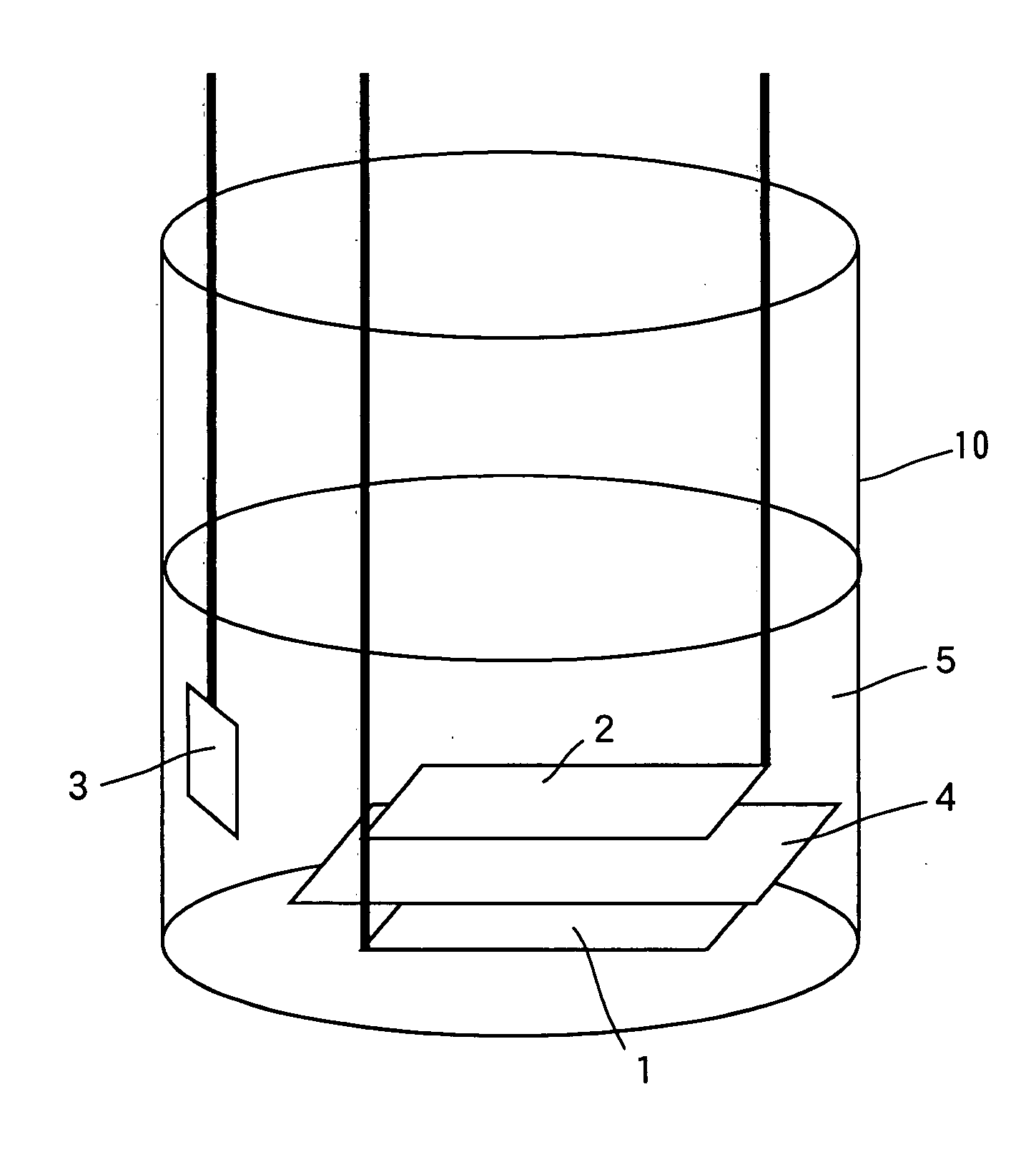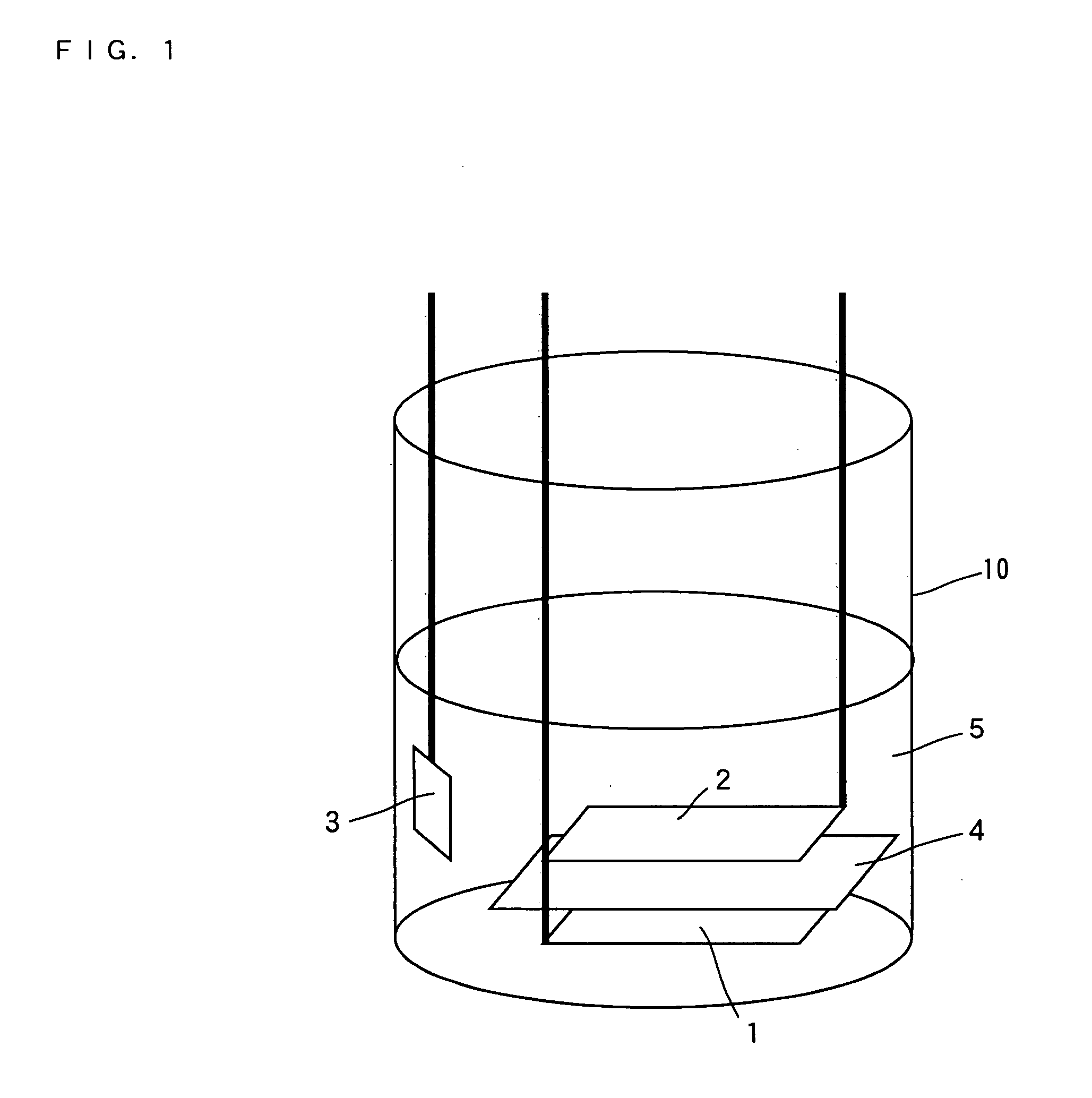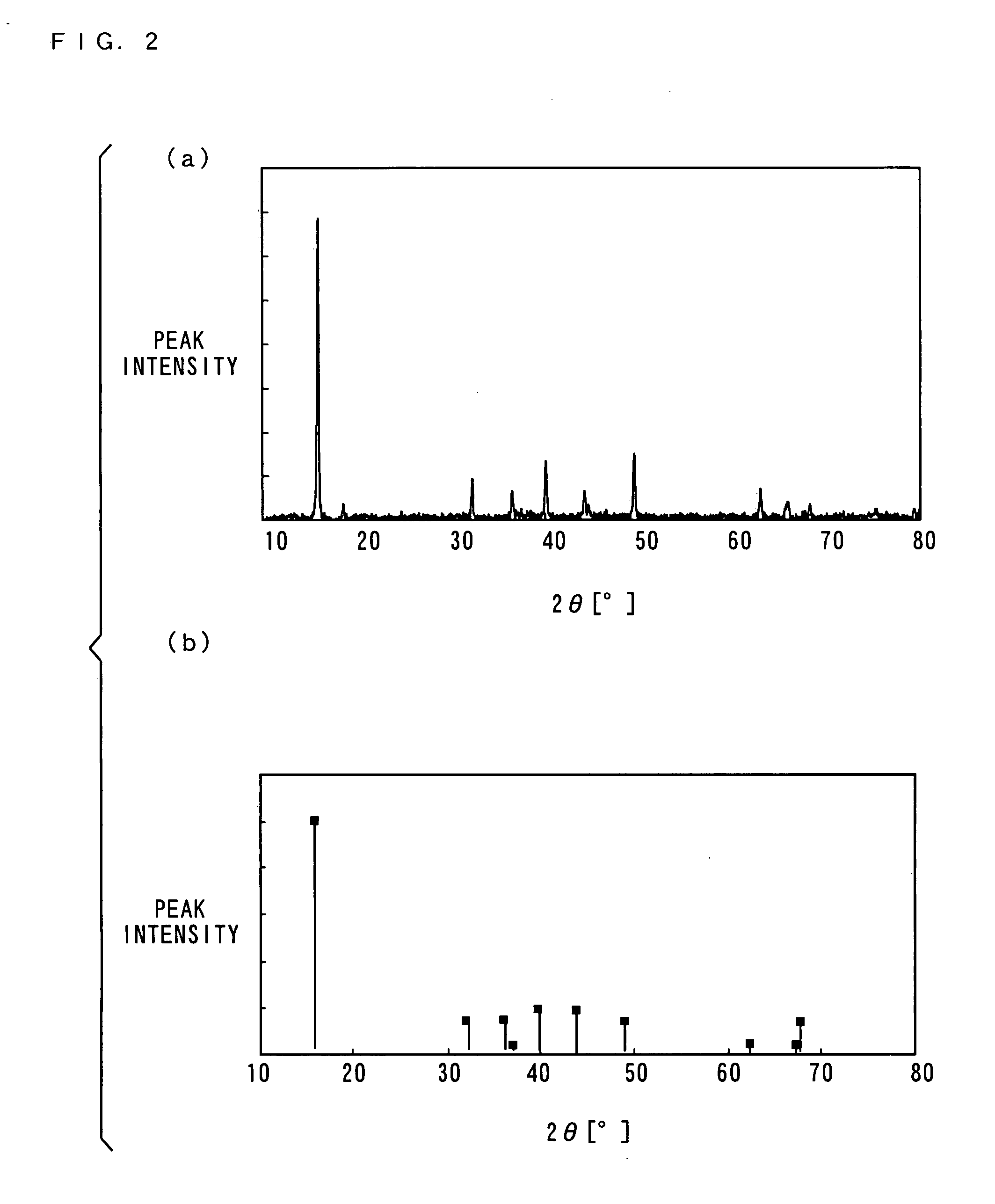Sodium ion secondary battery
a secondary battery and sodium ion technology, applied in the direction of non-aqueous electrolyte cells, cell components, electrochemical generators, etc., can solve the problems of limited material resources, difficult lithium production, and inability to increase discharge capacity
- Summary
- Abstract
- Description
- Claims
- Application Information
AI Technical Summary
Benefits of technology
Problems solved by technology
Method used
Image
Examples
example 1
(a) Inventive Example 1
[0098] (a-1) Manufacture of Positive Electrode Active Material
[0099] As starting materials for a positive electrode active material, sodium carbonate (Na2CO3), manganese oxide (Mn2O3) and cobalt oxide (Co3O4) were used.
[0100] The sodium carbonate (Na2CO3), manganese oxide (Mn2O3) and cobalt oxide (Co3O4) were mixed in a mole ratio of 2.1:1.5:1. In this case, the composition ratio of the sodium (Na), themanganese (Mn) andthecobalt (Co) was Na:Mn:Co=0.7:0.5:0.5.
[0101] The positive electrode active material obtained as powder by mixing the above-described materials was molded into pellets. Thereafter, the positive electrode active material was subjected to preliminary firing for 10 hours in an air at 700° C. and then main firing for 20 hours in an air at 800° C.
[0102] (a-2) XRD Measurement of Positive Electrode Active Material
[0103] Then, the positive electrode active material obtained by the main firing was measured using an XRD (X-ray diffractometer).
[010...
##ventive example 2
(b) Inventive Example 2
[0117] (b-1) Manufacture of Positive Electrode Active Material
[0118] As starting materials for a positive electrode active material, sodium carbonate (Na2CO3), lithium carbonate (Li2CO3), manganese oxide (Mn2O3) and cobalt oxide (Co3O4) were used.
[0119] The sodium carbonate (Na2CO3), the lithium carbonate (Li2CO3), the manganese oxide (Mn2O3) and the cobalt oxide (Co3O4) were mixed in a mole ratio of 2.1:0.3:1.5:1. In this case, the composition ratio of the sodium (Na), the lithium (Li), the manganese (Mn), and the cobalt (Co), Na:Li:Mn:Co=0.7:0.1:0.5:0.5.
[0120] A positive electrode active material obtained as powder by mixing the above-described materials was molded into pellets. Thereafter, the positive electrode active material was subjected to preliminary firing for 10 hours in an air at 700° C. and then main firing for 20 hours in an air at 800° C.
[0121] (b-2) XRD Measurement of Positive Electrode Active Material
[0122] The positive electrode active m...
example 3
(c) Inventive Example 3
[0131] (c-1) Manufacture of Positive Electrode Active Material
[0132] Similarly to Inventive Example 2 described above, sodium carbonate (Na2CO3), lithium carbonate (Li2CO3), manganese oxide (Mn2O3), and cobalt oxide (Co3O4) were used as starting materials for a positive electrode active material.
[0133] The sodium carbonate (Na2CO3), the lithium carbonate (Li2CO3), the manganese oxide (Mn2O3), and the cobalt oxide (Co3O4) were mixed in a mole ratio of 2.1:0.6:1.5:1. In this case, the composition ratio of the sodium (Na), the lithium (Li), the manganese (Mn), and the cobalt (Co), Na:Li:Mn:Co=0.7:0.2:0.5:0.5.
[0134] A positive electrode active material obtained as powder by mixing the above-described materials was molded into pellets. Thereafter, the positive electrode active material was subjected to preliminary firing for 10 hours in an air at 700° C. and then main firing for 20 hours in an air at 800° C.
[0135] (c-2) XRD Measurement of Positive Electrode Act...
PUM
 Login to View More
Login to View More Abstract
Description
Claims
Application Information
 Login to View More
Login to View More - R&D
- Intellectual Property
- Life Sciences
- Materials
- Tech Scout
- Unparalleled Data Quality
- Higher Quality Content
- 60% Fewer Hallucinations
Browse by: Latest US Patents, China's latest patents, Technical Efficacy Thesaurus, Application Domain, Technology Topic, Popular Technical Reports.
© 2025 PatSnap. All rights reserved.Legal|Privacy policy|Modern Slavery Act Transparency Statement|Sitemap|About US| Contact US: help@patsnap.com



